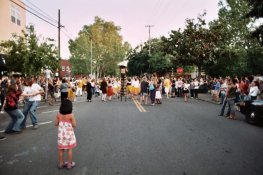darinwc
Subscriber
I've never worn glasses before, but I know I've been getting a bit nearsighted. I can see things fine up to about 15 feet or so. Distant objects are a bit fuzzy. Not too bad but not sharp.
The last 4 rolls of film I had developed were 90% out of focus. =[ I'm using a manually-focused SLR. I checked the registration of the focus screen to the film plane and that looks good.
So the only 2 possibilities are camera shake or bad focussing (user error).
The last 4 rolls of film I had developed were 90% out of focus. =[ I'm using a manually-focused SLR. I checked the registration of the focus screen to the film plane and that looks good.
So the only 2 possibilities are camera shake or bad focussing (user error).












